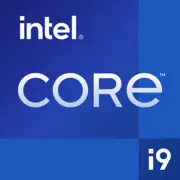Intel Core i9-13900F

인텔 코어 i9-13900F: 전문가와 열혈 팬을 위한 랩터 레이크의 강력함
(2025년 3월 기준)
주요 특징: 아키텍처와 혁신
2023년에 출시된 인텔 코어 i9-13900F 프로세서는 하이브리드 아키텍처 랩터 레이크 덕분에 요구가 많은 사용자에게 여전히 적합한 솔루션입니다.
아키텍처 및 공정
- 공정: 인텔 7 (10nm Enhanced SuperFin).
- 코어 및 스레드: 24 코어 (8 Performance-cores + 16 Efficient-cores) 및 32 스레드.
- 캐시 메모리: 36 MB L3 + 32 MB L2.
- 기본/최대 클럭: P-코어 — 2.0–5.6GHz, E-코어 — 1.5–4.2GHz.
- TDP: 65W (부하 시 실제 소비 전력이 200W 이상에 달함).
주요 기능:
- 인텔 스레드 디렉터 — P-core와 E-core 간의 작업 분배 최적화.
- PCIe 5.0 지원 — 비디오 카드용 16 레인 + NVMe용 4 레인.
- 열 속도 부스트 — 효율적인 냉각 시 자동 오버클럭.
성능:
- Geekbench 6: 2698 (Single-Core) / 17010 (Multi-Core).
- Cinebench R23 테스트에서 프로세서는 Single-Core에서 ~2100점, Multi-Core에서 ~36000점을 기록합니다.
호환 가능한 마더보드: 최적의 기초 선택하기
소켓 및 칩셋
이 프로세서는 LGA 1700 소켓을 사용하며 600 시리즈 및 700 시리즈 칩셋과 호환됩니다:
- Z790: 오버클럭 및 최대 성능을 위한 (예: ASUS ROG Maximus Z790 Hero — $450–500).
- B760: 가격과 기능의 균형 (MSI B760 Tomahawk — $180–200).
- H770: 오버클럭 없이 기본 작업용 (Gigabyte H770 Aorus Elite — $150–170).
선택에 대한 특이사항:
- 보드가 DDR5-5600+ 또는 DDR4-3200을 지원하는지 확인하세요 (모델에 따라 다름).
- M.2 슬롯 수를 확인하세요 (NVMe PCIe 4.0/5.0 용 최소 2~3개).
- CPU 전원 공급에 필수적인 VRM — 12+ 페이즈 보드를 선택하세요 (예: ASUS TUF Gaming Z790-Plus).
지원 메모리: DDR4 vs DDR5
i9-13900F는 DDR5-5600 (공식) 및 DDR4-3200과 호환됩니다.
표준 비교:
- DDR5: 더 높은 대역폭 (최대 90GB/s), 그러나 더 비쌉니다 (32GB DDR5-6000 — $130–150).
- DDR4: 더 저렴합니다 (32GB DDR4-3600 — $70–90), 그러나 클럭 속도가 제한적입니다.
권장 사항:
- 게임 및 비디오 편집용: 낮은 타이밍(CL36)의 DDR5-6000.
- 예산을 고려한 선택: DDR4-3600과 B760 마더보드.
파워 서플라이: 전력 계산
공식 TDP는 65W로 기본적인 숫자에 불과하며, 피크 부하에서는 프로세서의 소비 전력이 250W에 달할 수 있습니다.
권장 사항:
- 최소: 750W (RTX 4070급 비디오 카드 시스템용).
- 최적: 850–1000W (RTX 4090 또는 향후 업그레이드 시).
- 인증: 80 Plus Gold 이상 (예: Corsair RM850x — $140, Be Quiet! Straight Power 11 1000W — $200).
중요: CPU의 안정적인 전원 공급을 위해 8+8 핀 케이블을 사용하세요.
i9-13900F의 장단점
장점:
1. 멀티 스레드 성능의 리더: 렌더링, 스트리밍 및 게임을 동시에 처리합니다.
2. 유휴 상태 에너지 효율성: 인텔 7 기술이 가벼운 작업 시 에너지 소비를 줄입니다.
3. PCIe 5.0 지원: 향후 SSD와 비디오 카드의 잠재력을 발휘합니다.
단점:
1. iGPU 없음: 화면 출력을 위해 반드시 별도의 비디오 카드가 필요합니다.
2. 냉각 요구: 수랭식 쿨링이 없으면 (예: NZXT Kraken X73) 부하 시 온도가 95–100°C에 도달합니다.
3. 가격: $550–600 (신제품)인 반면, Ryzen 9 7900X는 $500입니다.
사용 시나리오: 이 프로세서는 누가 필요할까요?
- 전문적인 작업: Blender에서의 3D 렌더링, 코드 컴파일, DaVinci Resolve에서의 8K 비디오 처리.
- 스트리밍: 게임 중 FPS 손실 없이 x264 Medium 인코딩.
- 게임: RTX 4090으로 4K에서 144+ FPS (Cyberpunk 2077, Alan Wake 2).
실제 사례: Premiere Pro에서 30분짜리 비디오를 렌더링할 때 (4K, H.265) i9-13900F는 Ryzen 9 7900X보다 15% 더 적은 시간을 소요합니다.
경쟁자와의 비교
AMD Ryzen 9 7900X ($500):
- 장점: 더 나은 에너지 효율성, 내장 RDNA 2 GPU.
- 단점: 인텔의 24코어에 비해 12코어에 불과하며 멀티 스레딩 작업에서 ~20% 열세입니다.
AMD Ryzen 9 7950X3D ($700):
- 장점: 게임용 3D V-Cache (+15% FPS 증가, CS2, Starfield).
- 단점: 가격 비쌈, 하이브리드 아키텍처 최적화의 어려움.
결론: i9-13900F는 작업에서 경쟁자들보다 우세하지만, 게임에서는 AMD의 고급 3D 모델에게 밀립니다.
조립에 대한 실용적인 조언
1. 냉각:
- 최소: Thermal Grizzly Kryonaut 서멀 페이스트 + 타워 쿨러 (Noctua NH-D15).
- 최적: 360mm 수랭식 (Lian Li Galahad II).
2. 케이스: 통풍이 잘 되는 모델 선택 (Lian Li Lancool III, Fractal Design Torrent).
3. 추가 사양:
- NVMe PCIe 5.0 (Samsung 990 Pro 2TB — $250)로 12+ GB/s의 쓰기 속도 제공.
- RTX 4080급 이상의 비디오 카드.
최종 결론: i9-13900F는 누구에게 적합할까요?
이 프로세서는 최대 멀티 스레드 성능이 필요한 전문가와 열혈 팬의 선택입니다:
- 비디오 편집자, 3D 디자이너, 프로그래머.
- 게임과 인코딩을 동시에 수행하는 스트리머.
- PCIe 5.0 장치로의 업그레이드를 계획하는 사용자.
왜 이 프로세서인가요? 가격($550–600)과 업무에서의 성능 비율이 2025년에도 여전히 탁월합니다. 그러나 순수 게임 성능을 원한다면 Ryzen 9 7950X3D 또는 iGPU가 장착된 Core i9-14900K를 고려하는 것이 좋습니다.
기초적인
CPU 사양
메모리 사양
여러 가지 잡다한
벤치마크
다른 CPU와 비교
소셜 미디어에서 공유하기
또는 링크로 소개하기
<a href="https://cputronic.com/ko/cpu/intel-core-i9-13900f" target="_blank">Intel Core i9-13900F</a>